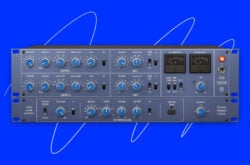Did you know you could apply delay on only the odd harmonics of a sample, or combine the sonic characteristics of two sounds?
In the tutorial above, we go over ten timeless sound design techniques for reimagining your samples. Watch along to hear each one applied in the DAW, and read below for highlights.
10 sound design techniques for reimagining your samples
1. Stutter and glitch
Stutters and glitches can be highly useful as transitions, fills, rhythmic accents, and more. In our tutorial, we use some sounds from Moore Kismet to explore how to apply these effects with the native tools in your DAW, via specialized third-party plugins like PORTAL and Stutter Edit, and via hardware like the Akai MPC One+, which features built-in Splice Sounds integration and an XY pad that’s perfect for the job. Go to 0:16 in the video to learn more about this technique and hear it in action.
2. Pitch automation
Getting creative with the parameters you automate is a great way to reimagine your samples and expand your sonic toolkit. Above, we explore how you can even automate pitch on percussive sounds to introduce some unique energy to your beats—go to 2:12 in the video to hear this in action.
3. Vocoding (on sounds that aren’t vocals)
As their name suggests, vocoders are most commonly used on vocals—but what if we tried going beyond this expectation? Above, we apply a vocoder on a percussion track and use a synth chord progression as the carrier signal to achieve a unique sense of rhythmic movement. Go to 2:55 in the video to learn more and hear how the technique sounds in the DAW.
4. Reverse reverb
Here’s a simple (but incredibly versatile) one—simply add a reverb to your favorite one-shot, bounce down the audio, and reverse it. Like stutters and glitches, this sound design technique can be used as an effective transition between sections—go to 3:53 in the video to hear it in the context of a full production.
5. Time stretching (to the extreme)
Many of us may have used time stretching to align a sample with the BPM of our session—but what if you stretched a sample beyond recognition? At 4:15 in the tutorial, we showcase this technique by creating organic-sounding pads and textures out of small fragments of audio.
6. Layering and resampling
While layering is a fundamental technique, doing it right can take some practice. Above, we demonstrate how you can maximize the potential of layering by being meticulous with your fades, and then resampling the audio for further sound design—go to 5:57 in the video to learn more.
7. Convolution
Most commonly used for reverb, convolution is a technique that applies the sonic characteristics of one sample (known as the impulse response) to another sound. Above, we showcase how you can import your own one-shots to a convolver to create some intriguing sounds—go to 6:23 in the video to hear convolution in the context of a full production.
8. Multi-band effects processing
Multi-band effects processing expands your sound design possibilities exponentially, allowing you to apply different effects to the different frequency ranges contained within a singular sound. In our tutorial, we showcase how this technique can be used to create captivating textures—go to 7:24 to hear what we came up with in the DAW.
9. Harmonic processing
While it may require a specialized tool, processing different components of the harmonics of a sound can be an exciting way to achieve new timbres. Above, we use the Harmonic Split tool in Bitwig Studio to process the odd and even harmonics separately—go to 8:09 in the video to hear how this sounds.
10. Granular LFO movement
Last but certainly not least, using automation in conjunction with granular processing can create some innovative sounds. In the tutorial, we use Kilohearts’ Phase Plant to automate the playback position of a sound to spark some ideas—go to 9:05 to see this process in action.
Conclusion
Hopefully this tutorial showcased some sound design techniques that inspire you to try something new the next time you’re using samples in your session. If you want to use any of the one-shots and loops we used in our video, you can find all of them in this Collection, and you can also try out many of the plugins we featured for free via Splice Rent-to-Own.
What was your favorite technique that was covered in the tutorial? What other topics in music production would you like to see us tackle next? Let us know in the comments section of the video, and subscribe to the Splice YouTube channel for more tips and tutorials.
Explore industry-leading plugins, bundles, DAWs, and more:
June 21, 2023


